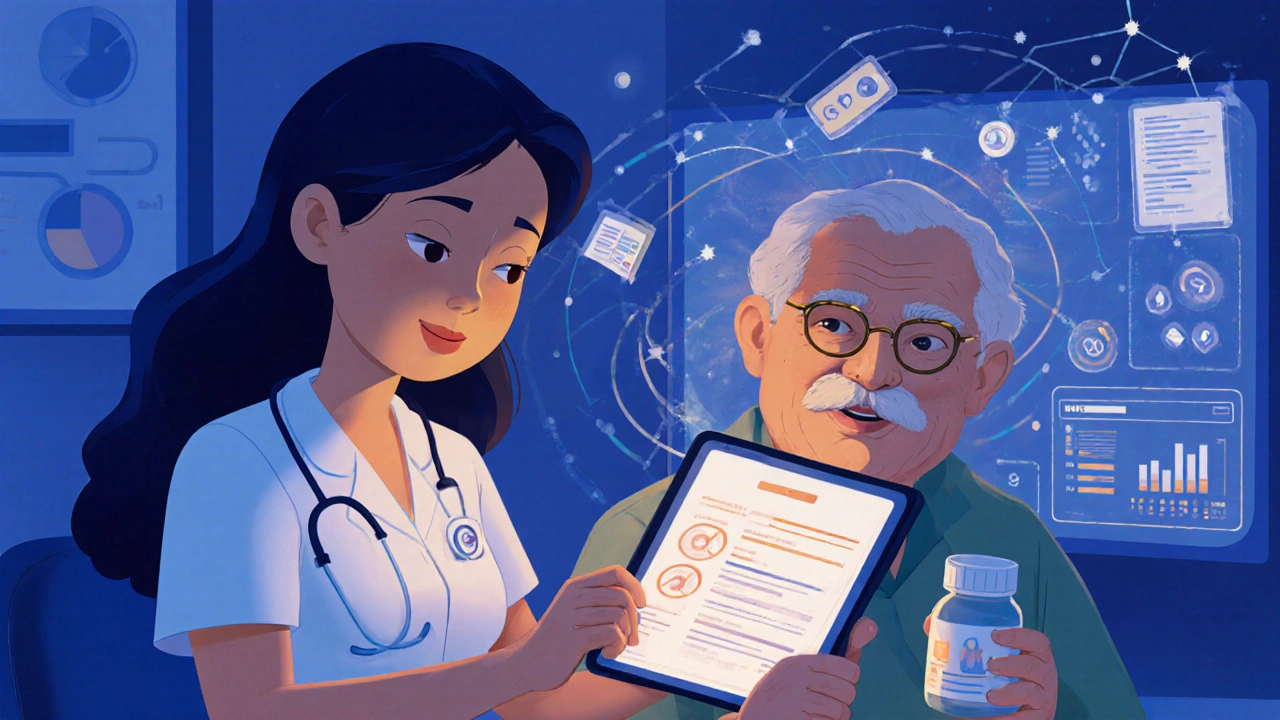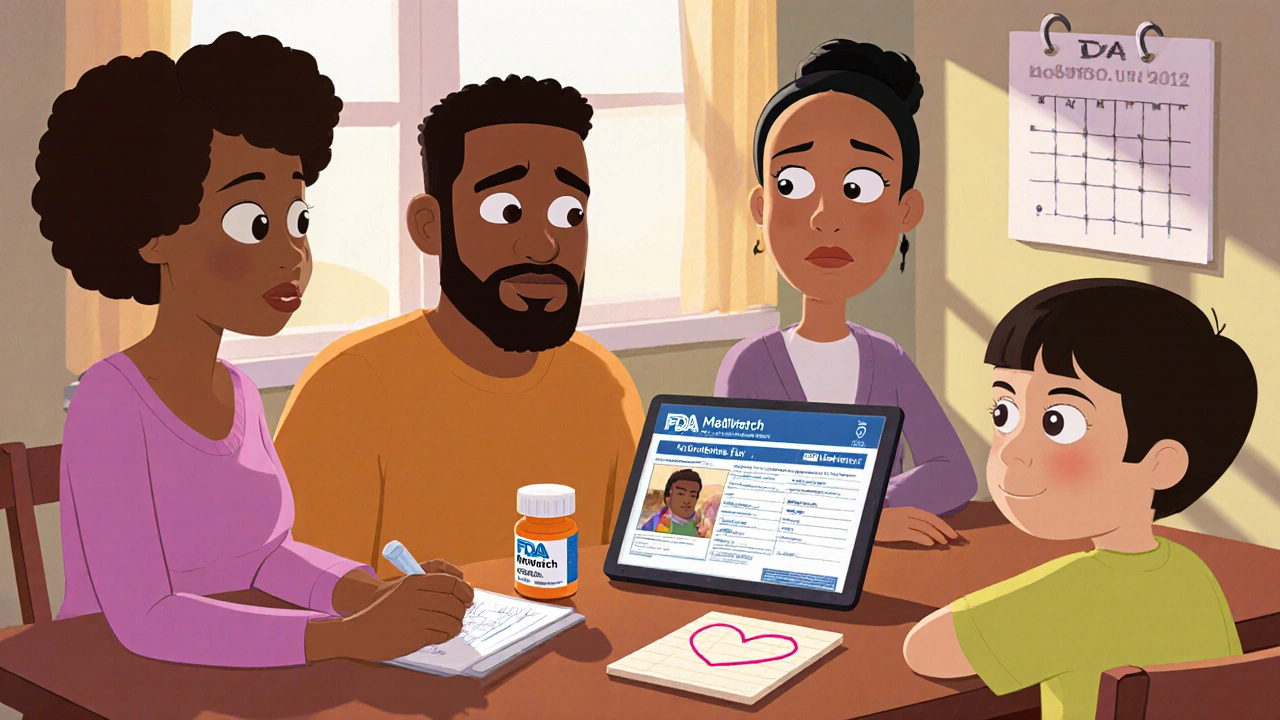Every year, millions of people take prescription drugs without issue. But for some, a medication can cause a serious reaction - one that wasn’t listed on the label, wasn’t seen in clinical trials, or didn’t show up until thousands of people started using it. That’s where adverse event reporting comes in. If you or someone you know has had a bad reaction to a drug, reporting it to the FDA isn’t just a good idea - it’s a vital part of keeping medicines safe for everyone.
What Counts as an Adverse Event?
An adverse event is any harmful or unwanted reaction that happens after taking a medication. It doesn’t have to be proven that the drug caused it. If it happened after you took the medicine, and it was unexpected, it counts. This includes:- Severe allergic reactions like anaphylaxis
- Liver damage, kidney failure, or heart rhythm problems
- Unexplained rashes, swelling, or breathing trouble
- Depression, suicidal thoughts, or sudden changes in behavior
- Birth defects in babies born to mothers who took the drug
- Drug interactions that weren’t documented
- Even if the drug didn’t work at all - especially if it was supposed to treat a life-threatening condition
The FDA doesn’t need absolute proof. They’re looking for patterns. One report might not change anything. But 50 reports of the same rare side effect? That’s a red flag.
Who Can Report?
Anyone can report an adverse event - patients, family members, caregivers, doctors, nurses, pharmacists, and pharmaceutical companies. But the rules are different depending on who you are.Patients and caregivers: You can report voluntarily. No special training needed. The FDA encourages you to report even if you’re unsure.
Healthcare professionals: You’re not legally required to report every side effect - except for vaccines under the National Childhood Vaccine Injury Act. But you’re strongly encouraged to report serious events. Your reports are more valuable because you have medical records, lab results, and clinical context.
Drug manufacturers: They’re legally required to report serious and unexpected adverse events within 15 days. They use special electronic systems, not the public form.
How to Report as a Patient or Family Member
You don’t need a doctor to file a report - but it helps. Here’s how to do it yourself:- Get the basics ready: Write down the name of the drug (brand and generic), dosage, how long you took it, and when you started and stopped.
- Describe the event in detail: When did it start? What happened? Did you go to the ER? Were you hospitalized? Did you need treatment? Include symptoms, how bad they were, and how long they lasted.
- Include your medical history: Do you have other conditions? Are you taking other medications? Any allergies?
- Take a photo: Snap a picture of the prescription label, the pill bottle, or the actual medication. You can upload it when you report.
- Go to the MedWatch form: Visit www.fda.gov/medwatch and click on "Report a Problem." Use the online Form 3500.
- Fill it out: The form asks for your contact info, the patient’s info (age, gender), drug details, and a description of the event. You have 3,000 characters - use them. Be specific.
- Submit: You’ll get a confirmation number. Save it. If the system times out (yes, it happens), you can come back later using that number to resume.
Pro tip: If you’re not sure whether it’s serious, report it anyway. The FDA would rather see too many reports than miss one that could save a life.

How Healthcare Providers Should Report
If you’re a doctor, nurse, or pharmacist, your report carries more weight. Here’s how to make it count:- Include lab results (e.g., elevated liver enzymes, creatinine levels)
- Attach imaging reports (X-rays, MRIs) if relevant
- Document the timeline: When did the drug start? When did symptoms begin? Did they improve after stopping the drug?
- Use MedDRA terminology if you’re familiar with it - it helps the FDA code the event correctly
- Don’t say "possible reaction." Say "patient developed acute liver failure 7 days after starting drug X, with no other plausible cause. Drug was discontinued and liver enzymes normalized in 14 days."
According to FDA data, reports from healthcare professionals that include detailed clinical information are 73% more likely to trigger a safety review. Your expertise matters.
What Happens After You Report?
Your report goes into the FDA Adverse Event Reporting System (FAERS), a database with over 30 million entries. It’s not a hotline - you won’t get a call right away. But here’s what happens next:- Reports are grouped by drug and symptom
- Statistical tools look for unusual patterns - like 100 reports of a rare heart rhythm problem linked to one drug
- If a signal is found, FDA scientists investigate further
- They may contact you for more details - that’s a good sign
- Eventually, they might update the drug’s label, add a "Black Box" warning, or even pull it from the market
It’s slow. The average time between a report and a safety review is 217 days. That’s because the FDA has only one safety reviewer for every 18,000 reports. But every report adds to the picture.
Common Problems and How to Avoid Them
Most reports fail because they’re too vague. Here’s what to avoid:- "I felt weird." → Be specific: "I had chest tightness and dizziness 20 minutes after taking the pill, lasting 45 minutes."
- "The drug didn’t work." → Unless it was for a life-threatening condition, this isn’t usually reportable. Focus on side effects.
- Missing dates. → Always include when you started and stopped the drug, and when symptoms began.
- Not including other meds. → A reaction might be from a drug interaction, not the main drug.
- Using the wrong form. → Patients use Form 3500. Manufacturers use ICH E2B. Don’t mix them up.
One Reddit user spent 45 minutes filling out the form - only to have it time out. Save your work often. Use the Report ID to return later.

Why Your Report Matters
The FDA doesn’t test drugs on millions of people before approval. Clinical trials involve a few thousand. Real-world use is different. That’s why adverse event reporting is the last line of defense.Examples of what reporting has caught:
- Fluoroquinolone antibiotics (like Cipro) linked to aortic aneurysms - led to a Black Box warning in 2018
- Weight-loss drugs causing heart valve damage
- Antidepressants increasing suicidal thoughts in young adults
These weren’t found in labs. They were found because someone - a patient, a nurse, a pharmacist - took the time to report.
Studies estimate that only 1% to 10% of adverse events are ever reported. That means 90% of the warning signs are invisible. Your report could be the one that changes everything.
What’s New in 2025?
The FDA is upgrading its system. In 2023, they launched FAERS Public Dashboard 2.0, letting anyone explore reports by drug or symptom. In 2024, they’re rolling out AI tools to scan reports for hidden patterns faster. They’re also working with electronic health records to automatically pull in adverse event data - a huge step forward.But technology won’t fix underreporting. Only people can do that.
Final Thoughts
Reporting an adverse event isn’t complicated. It’s not a lawsuit. It’s not a complaint. It’s a safety net. You don’t need to be a doctor. You don’t need to be an expert. You just need to care enough to speak up.If your child had a seizure after a new medication. If your mother developed a rash that turned into a hospital stay. If you felt your heart racing after taking a common painkiller - report it. The system is slow, imperfect, and under-resourced. But it only works if people use it.
One report might not make headlines. But 1,000? That’s how drugs get pulled. That’s how labels get updated. That’s how someone else’s life gets saved.
Do I need a doctor’s help to report an adverse event to the FDA?
No, you don’t need a doctor to report. Patients and family members can submit reports directly through the FDA’s MedWatch online form. However, if you’re a healthcare provider, your report will be more detailed and useful because you can include medical records, lab results, and clinical context. If you’re unsure whether the reaction is serious, talk to your doctor - but don’t wait to report.
What if I don’t know if the drug caused the reaction?
You still report it. The FDA doesn’t require proof of causation. They’re looking for patterns. If multiple people report the same side effect after taking the same drug, that’s a signal. Even if you think it’s "probably not" the medication, report it anyway. The system is designed to catch what you can’t be sure of.
How long does it take for the FDA to act on a report?
There’s no set timeline. Individual reports aren’t reviewed immediately. They’re stored in the FAERS database and analyzed in bulk. If a safety signal emerges - like dozens of similar reports - the FDA may investigate further. This can take months or even years. The average lag between report submission and initial safety review is about 217 days. But your report contributes to the bigger picture, even if you never see the outcome.
Can I report an adverse event for an over-the-counter (OTC) drug?
Yes. The FDA accepts reports for all medications, including OTC drugs like ibuprofen, acetaminophen, allergy pills, and sleep aids. Serious reactions - like liver damage from too much acetaminophen or allergic reactions to OTC antihistamines - are just as important to report as those from prescription drugs.
Is my report confidential?
Yes. The FDA protects your personal information. Your name, address, and contact details are not made public. Only de-identified data is shared in public reports. If you’re a healthcare provider, your professional information may be included in aggregate reports, but your identity remains protected. The FDA’s priority is patient safety, not identifying reporters.
What if I submitted a report and didn’t get a response?
You won’t always get a response. The FDA receives over 2 million reports a year and doesn’t have the staff to reply to each one. That doesn’t mean your report wasn’t counted. It’s added to the database and analyzed along with others. If your report helps identify a new safety issue, you may be contacted for more details - but that’s rare. The value is in the collective data, not individual feedback.
Can I report a side effect that happened years ago?
Yes. The FDA accepts reports for adverse events that happened at any time, even years after taking the drug. While recent reports are more useful for detecting new risks, historical reports help build a complete safety profile - especially for drugs that have been on the market for decades. Include as much detail as you can remember, even if dates aren’t exact.
Do I need to report every minor side effect?
Not every minor side effect needs to be reported. The FDA focuses on serious, unexpected, or life-threatening events. Common side effects like mild nausea, drowsiness, or headache are usually expected and already listed on the label. But if a side effect is worse than described, lasts longer than expected, or leads to hospitalization, report it. When in doubt, report it.


Elizabeth Buján
November 12, 2025 AT 06:19Andrew Forthmuller
November 12, 2025 AT 19:10Mark Rutkowski
November 14, 2025 AT 13:26vanessa k
November 16, 2025 AT 09:55Benjamin Stöffler
November 17, 2025 AT 07:04Samantha Wade
November 19, 2025 AT 06:10manish kumar
November 19, 2025 AT 23:10Arpita Shukla
November 21, 2025 AT 14:51Nicole M
November 21, 2025 AT 22:36Ryan Everhart
November 23, 2025 AT 13:34David Barry
November 24, 2025 AT 07:32Alyssa Lopez
November 26, 2025 AT 03:38